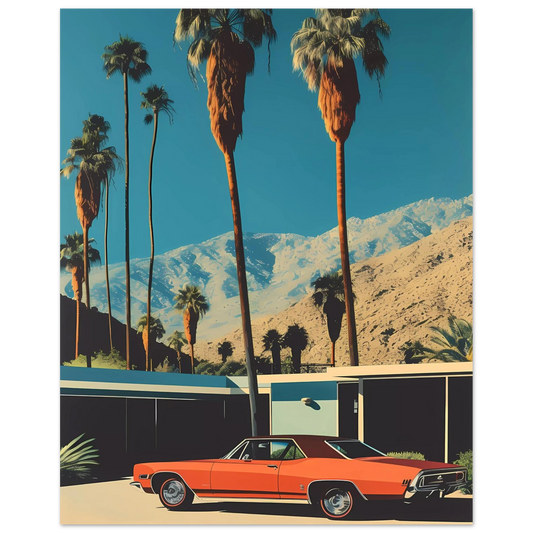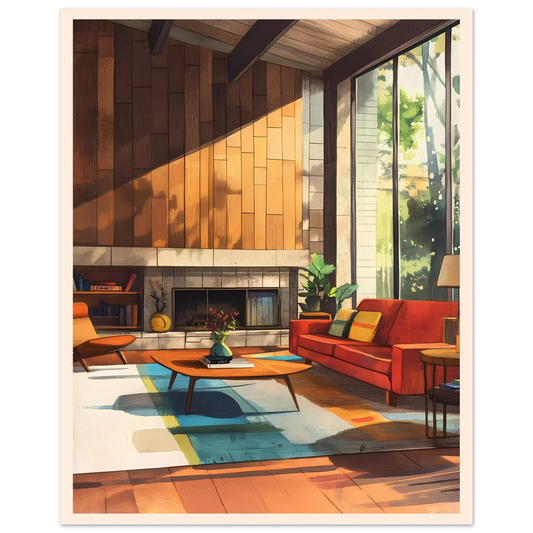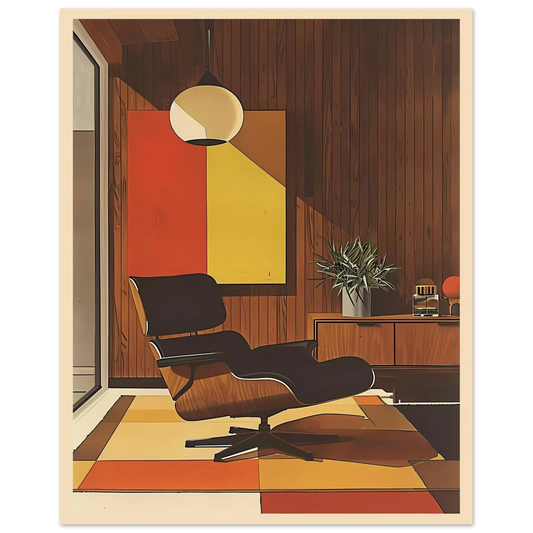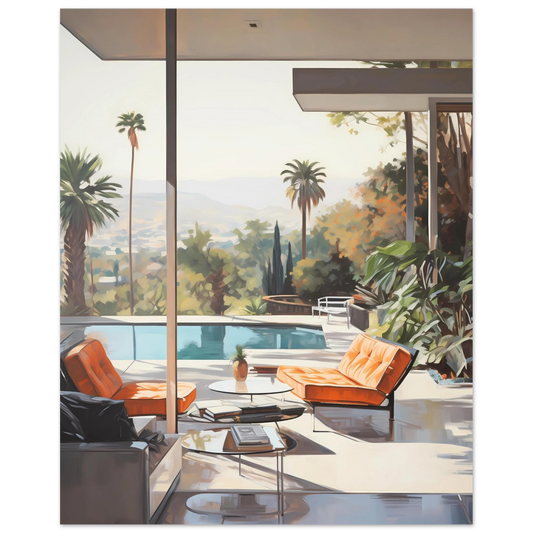There is something quietly magical about Palm Springs. The light feels softer, the colors warmer, and time seems to slow down. Across the desert floor, glass and concrete homes rest gently against the mountains, perfectly balanced with the landscape around them. Walking through this place feels like stepping into a sunlit dream where mid-century modern architecture continues to glow with effortless beauty.
-A Desert That Became a Dream
During the 1940s and 1950s, a group of visionary architects arrived in Palm Springs with a bold idea. Richard Neutra, Albert Frey, William Krisel, Donald Wexler, and E. Stewart Williams saw the desert not as an obstacle but as inspiration. They wanted to design homes that worked with the environment rather than against it.
Using glass, steel, and concrete, they created open structures filled with light. Large windows erased the boundary between interior and exterior. Flat roofs, shaded patios, and long horizontal lines reflected the calm of the desert horizon. This new approach became known as Desert Modernism, a movement that celebrated simplicity, function, and harmony with nature.

Palm Springs - Mid-Centrury Modern artwork by Marco Viçoso
Icons of a Golden Era
Among the most famous examples is Richard Neutra’s Kaufmann Desert House, completed in 1946. Its perfect proportions and endless glass captured the essence of modern living in the desert. Albert Frey’s Frey House II, perched high on a rocky hill, is built around a natural boulder that becomes part of the living room itself. It is a powerful reminder that architecture can exist in balance with the land.
And then there was Frank Sinatra’s Twin Palms Estate, a home that blended sophistication with leisure. These buildings were more than beautiful structures. They expressed an entire way of life filled with sunlight, freedom, and a quiet sense of optimism.
Below is a curated list of the most influential MCM architects who shaped Palm Springs
Drawn from historical accounts and landmark examples. I've focused on those most frequently cited for their desert-specific contributions, including notable works and their impact.
| Architect | Lifespan | Key Palm Springs Works | Signature Style/Impact |
|---|---|---|---|
| Albert Frey | 1903–1998 | Frey House II (1964), Palm Springs Visitor Center (formerly Tramway Gas Station, 1965), Kocher-Samson Building (1936) | Pioneered "Desert Modernism" with bold geometric forms and hyperbolic paraboloid roofs; one of the earliest modernist arrivals, blending European influences with desert adaptation. |
| Richard Neutra | 1892–1970 | Kaufmann Desert House (1946), Bailey House (1952) | Iconic glass-and-steel residences emphasizing site integration and light; his Kaufmann House is a defining image of MCM glamour, photographed by Julius Shulman. |
| E. Stewart Williams | 1925–2023 | Frank Sinatra's Twin Palms (1947), Palm Springs City Hall (1956), Chase Bank (1959) | Sleek, functional designs with Scandinavian influences; Sinatra's home set the celebrity standard for MCM estates with piano-shaped pools and sliding glass doors. |
| Donald Wexler | 1926–2015 | Dinah Shore Estate (1964), Palm Canyon Theatre (1962), Steel Houses (1960 prototypes) | Prefabricated steel structures suited to the desert; innovative use of industrial materials for affordable, heat-resistant homes. |
| William F. Cody | 1916–1979 | Del Marcos Hotel (1947), Palm Springs Tennis Club (1958), Abernathy House (1946) | Versatile resort and residential designs; prolific in civic projects, blending organic materials with modernist geometry. |
| William Krisel | 1924–2017 | Twin Palms Estates tract homes (1950s), Alexander Construction developments | Mass-produced affordable MCM tract housing with butterfly roofs and post-and-beam construction; partnered with Palmer & Krisel for over 2,500 homes. |
| John Lautner | 1911–1994 | Edgar Kaufmann Sr. House (1946 addition), Desert Island Rustic Furniture Store (1958) | Dramatic, organic forms inspired by Frank Lloyd Wright; focused on site-specific innovation, like cantilevered roofs echoing the San Jacinto Mountains. |
| Hugh Kaptur | 1925–2021 | Riviera Hotel (1959), House of Tomorrow (1962 dome prototype) | "Popluxe" flair with unconventional shapes; influenced by Wright, he created playful, futuristic elements in hotels and homes. |
| A. Quincy Jones | 1919–2006 | Annenberg Estate (Sunnylands, 1966), Various celebrity homes | Glamorous, low-profile estates with shaded courtyards; LA-based but key in Palm Springs' upscale MCM scene. |
| Lloyd Wright | 1890–1978 | Oasis Hotel (1924, early influence) | Organic modernism bridging to MCM; son of Frank Lloyd Wright, his early desert work laid groundwork for later styles. |
The Spirit of Light and Line
Palm Springs architecture has always been about more than design. It is about emotion and the experience of space. Open floor plans encouraged connection, while simple forms and organic materials created peace. Bright touches of turquoise, mustard, and coral contrasted with the sandy tones of the desert, bringing warmth and joy. Designers such as Charles and Ray Eames, George Nelson, and Eero Saarinen added furniture that was playful, elegant, and timeless.
Even today, the mid-century modern style feels as fresh as ever. It continues to inspire artists, designers, and collectors because it combines simplicity with soul.

Richard Neutra - Kaufman House

Frank Sinatra's Twin Palms by E. Stewart Williams

Donald Wexler residance by Donald Wexler
An Artist’s Perspective
As an artist, I often find myself drawn to the light and geometry of Palm Springs. The way the sun reflects on glass walls, the sharp lines of shadows at noon, and the stillness of the evening all become moments of inspiration.
Our Palm Springs Collection is a tribute to that timeless energy. Each artwork captures a glimpse of what makes this place so unique: balance, clarity, and optimism. It is my way of transforming architecture into color and emotion, preserving the feeling that Palm Springs gives to everyone who experiences it.
Why It Still Matters
Why does Palm Springs still captivate us? Because mid-century modernism wasn’t only about how things looked, it was about how they felt. It celebrated simplicity, balance, and a deep appreciation for everyday life. Open spaces encouraged conversation. Natural light replaced decoration. And beauty was found in restraint.
Decades later, the aesthetic still feels fresh. The soft desert palette, geometric compositions, and sense of calm that define mid-century homes continue to influence everything from interior design to art. These values are just as meaningful today as they were seventy years ago.
👉 Mid-Century Modern Collection




